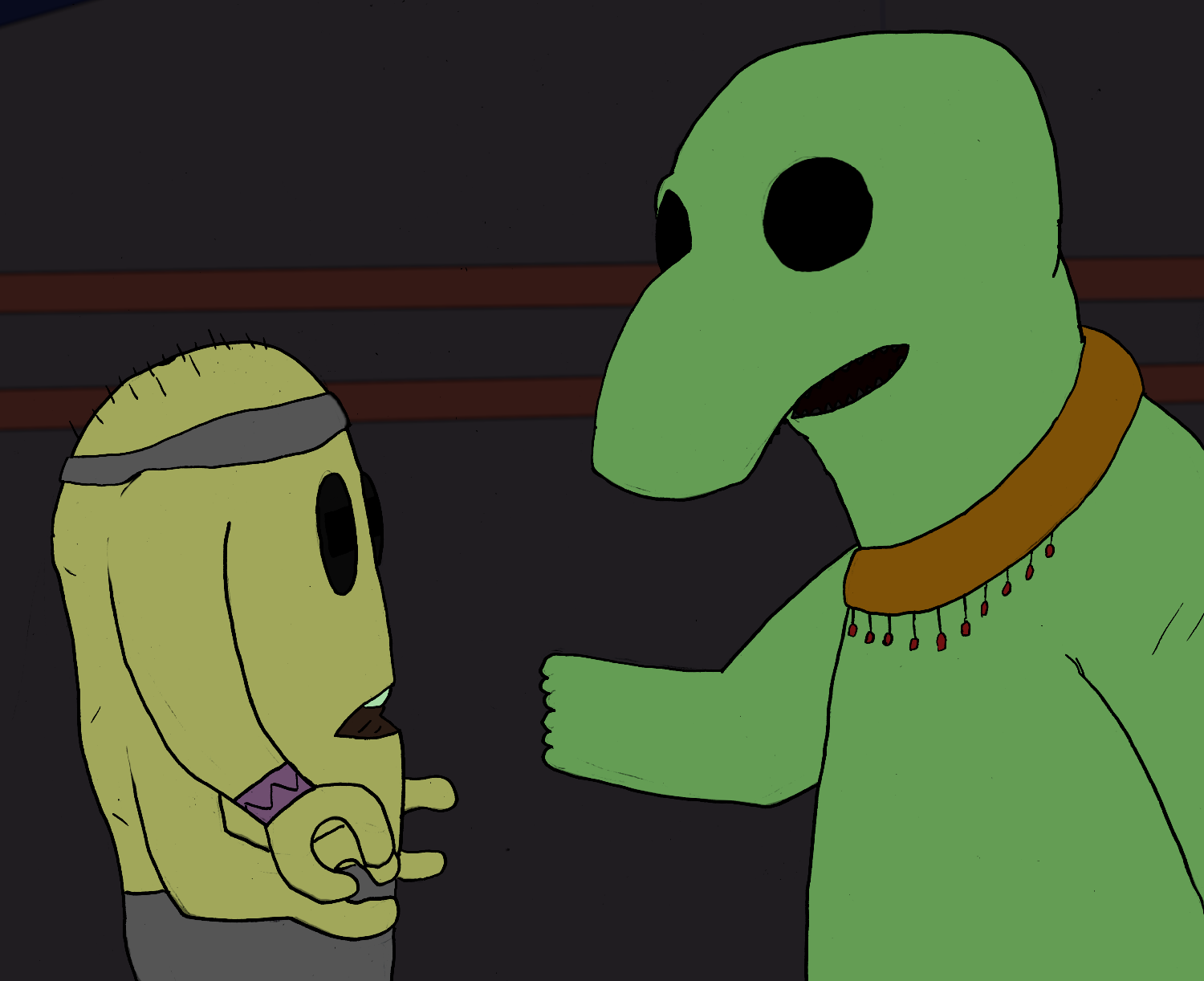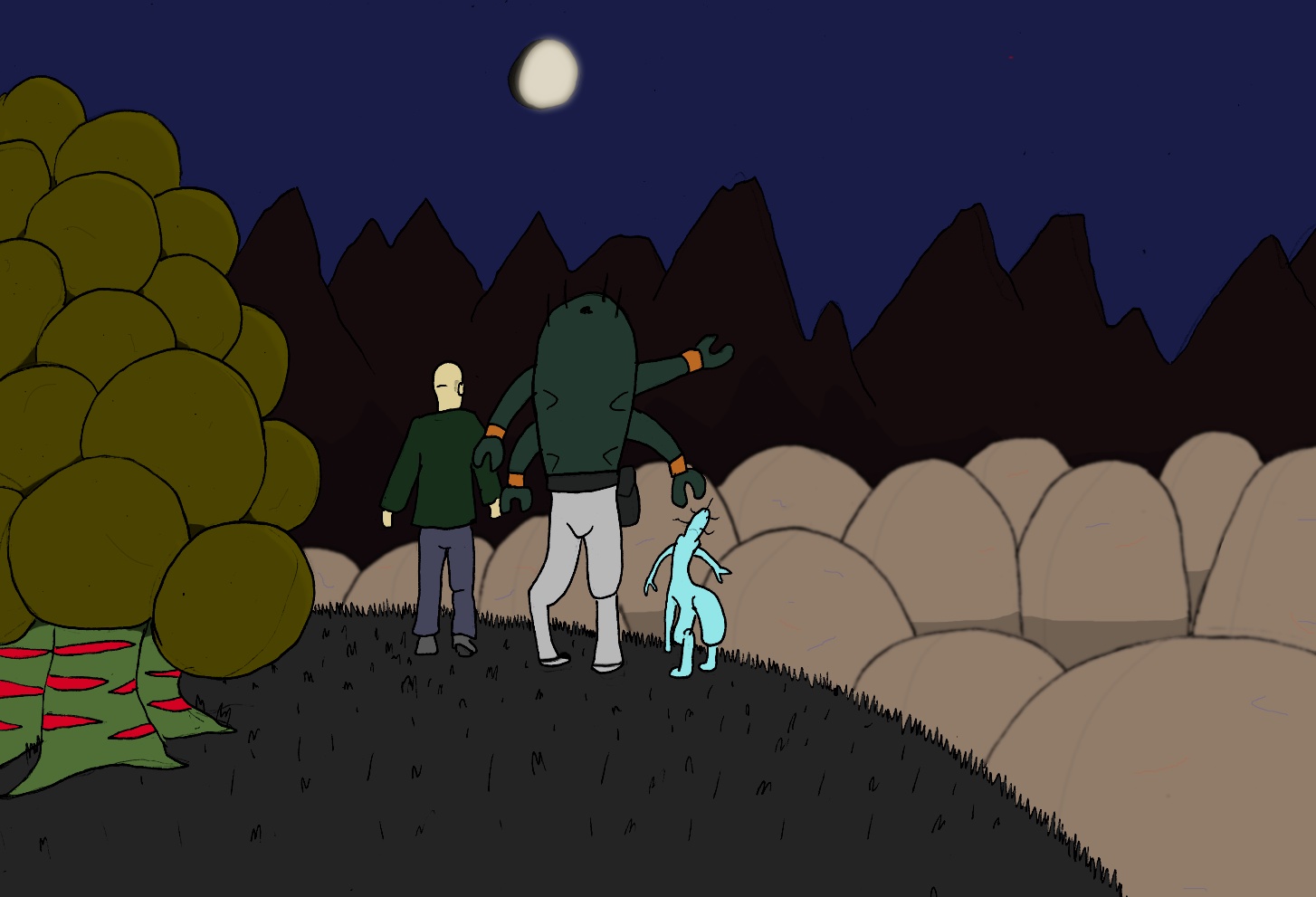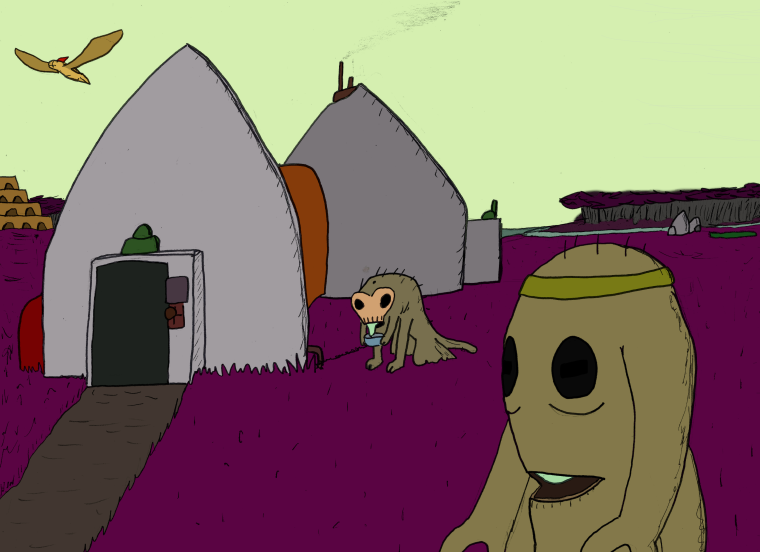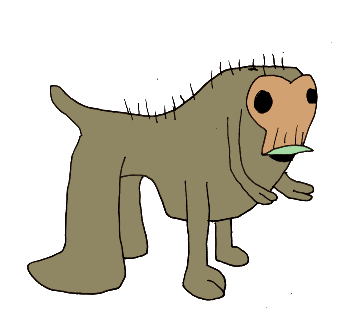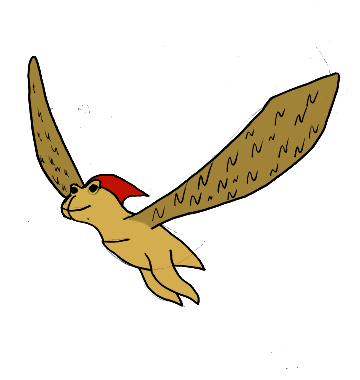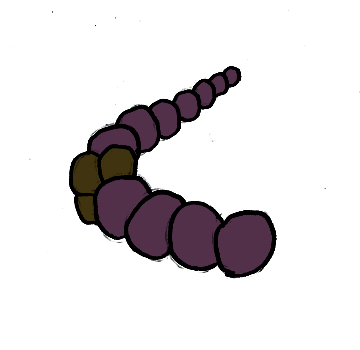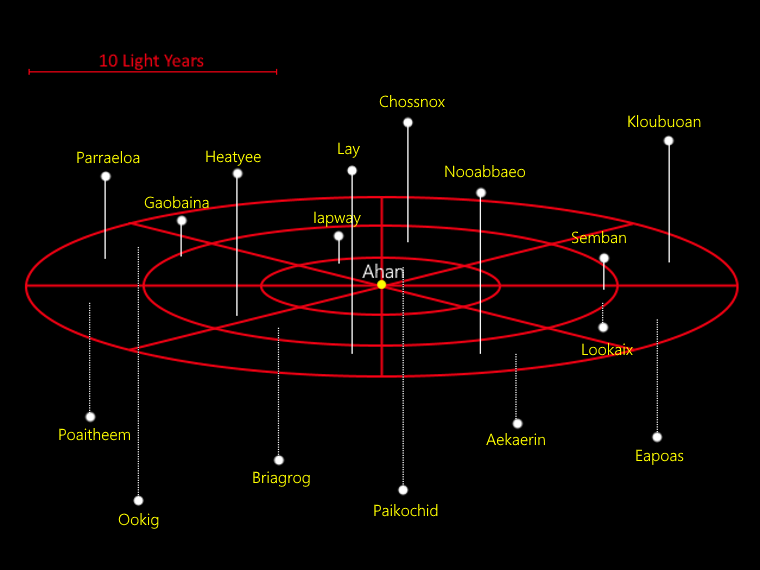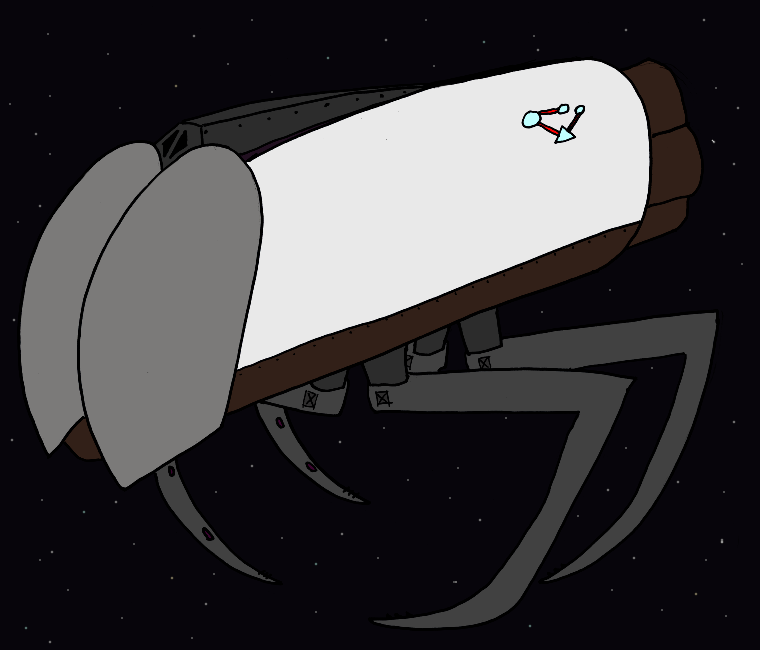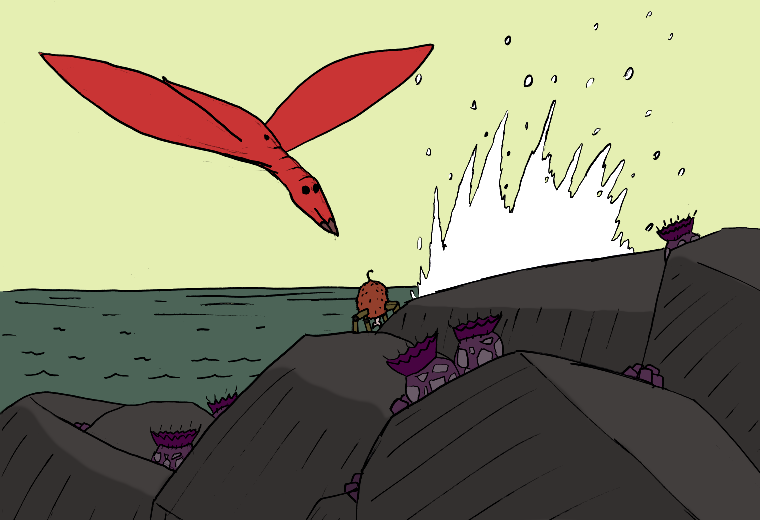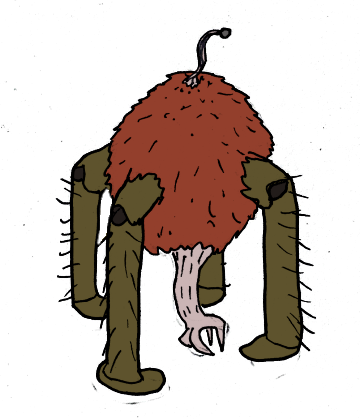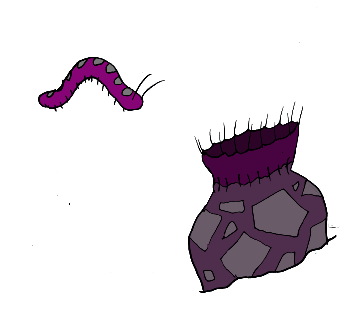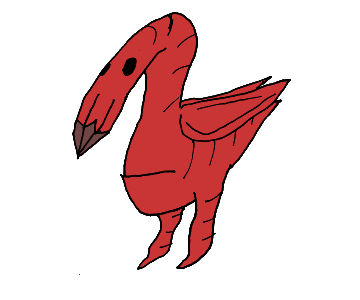Planet Gurx: Many Gurxian Animals
I’ve been exploring the animals of planet Gurx three at a time, with a little shot of their habitat. That’s all well and good, but I recently noticed that I still have about sixty of these things left and I don’t want to go past a year on this planet. Howzabout we just bang out some larger posts about animals real quick? No objections? Let’s go.
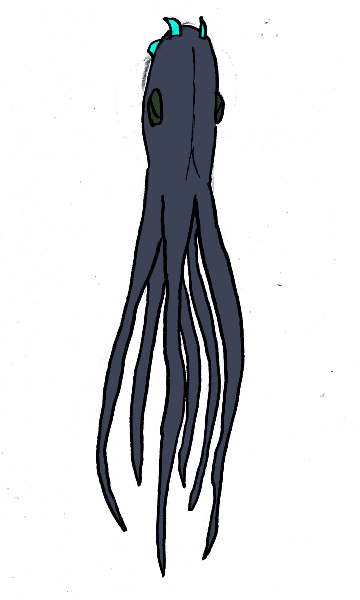
A kind of docile aquatic Lapaouger that lives along the island coasts. Counting their limbs, they taller than the average Strondovarian and their “upright” kind of posture led ancient Strondos to think of them as the people of the sea, though they’re actually very dumb by Strondo standards. Awuavarian is an insult (though one considered childish and corny, kind of like calling someone a “stupidhead”). They happily graze on plants on the ocean floor, usually until being eaten by predators visiting from deeper in the ocean.
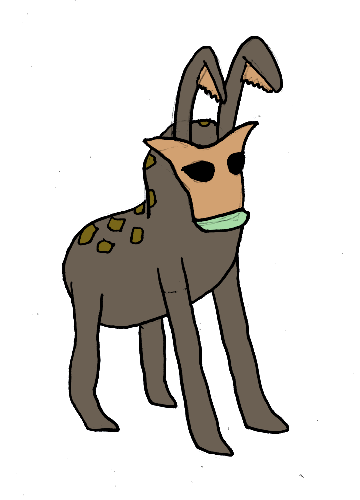
A forest-dwelling Aehubar species whose top limbs have bonelike hard protuberances that aid in scraping the Gurxian equivalent of trees, which are often covered with nutrient-rich mosses. There are different types of Okkealil, ranging in size from ones that could fit in your hand to ones that (standing on their two lower limbs) would rival a Strondo in height. Most live in small family units and are preyed upon by predators, but their scraper-arms can be used in self defense, so they tend to go down fighting.
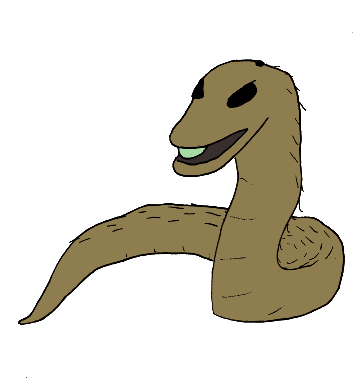
Another animal native to some Gurxian forests is the Yibbeau. Though they evolved from Lapaouger, they’ve managed to lose their limbs in favour of a serpentine bodyplan that lets them climb all over the trees and act as an ambush predator. Rather than using fangs or constriction like a snake, they prey on smaller animals by firing their Rel out of their mouths in a manner reminiscent of Earth frogs.
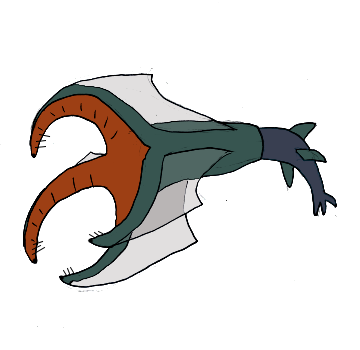
An aquatic Vootuph species of extremely venomous predators. The front of a Thoybrai opens into four grasping limbs, each with an eye and, more importantly, each with a stinger. A Thoybrai will stick its prey, then grab it until it dies, then eat at its leisure.
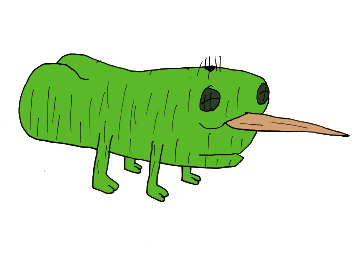
This horned clapbutt is a type of Ekkpay that lives near shallow streams where they stick their nose into the slimy muck and shake it around. Then they gulp in the resulting roiled water and fliter-feed to get all the little stuff that lives in there. They do, of course, also use the horns when fighting over territory of mating.
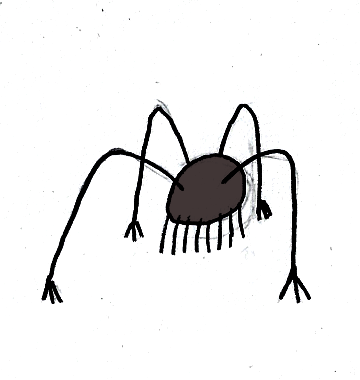
Tiny air-breathing Vootuph that live most of their lives living on other animals. With a tongue that can pierce even thick Gurxian skin to drink blood, Gairan thrive on larger beasts, especially Lapaouger. Strondovarians have creams they rub onto themselves to prevent Gairan from living on them, but wild animals are often covered in the things.
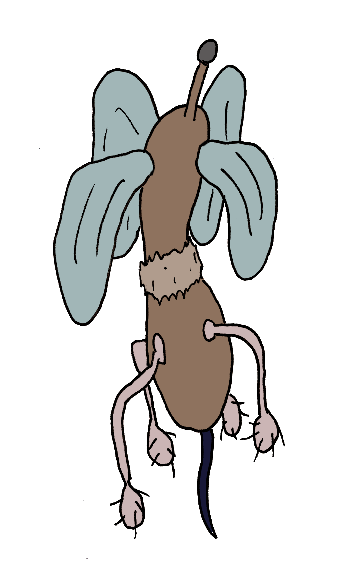
A type of flying Vootuph that tends to fly around larger animals and pick the Gairan off them. Even though Strondos have other ways of keeping Gairan in check, they still consider Oyel a symbol of cleansing and they are quite fond of the buzzing sound they make.
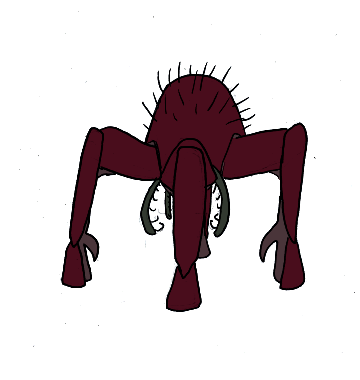
An armoured Vootuph that lives along the shores and build nests in the mud. To eat, they wade into the water and prey on smaller animals it catches swimming beneath it. They were a delicacy to Strondos in olden days, and their shells were often used as a decorative material.

